Unlocking the Full Potential of Cloud Automation for Your Business
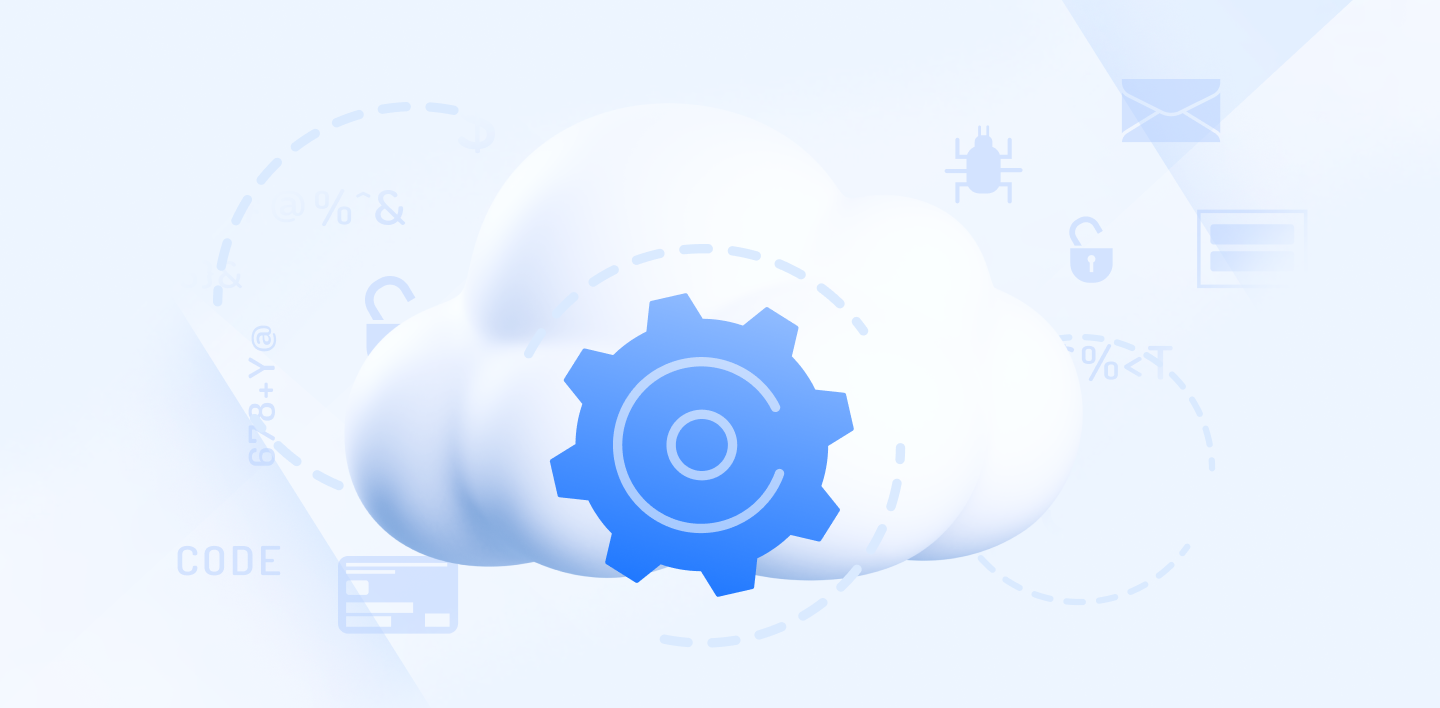
Long gone are the days of manually configuring your cloud storage to meet customers' growing needs and demands. Now, businesses can enjoy a more flexible, stable, efficient, and secure means of storing data with various cloud architectures and storage methods.
From S3 storage to cloud storage for teams, the tech world has never been so promising for companies to manage their data.
One of the up-and-coming advances in cloud storage is cloud automation, a set of tools, processes, and best practices designed to optimize a cloud infrastructure to reduce the manual effort needed to manage the cloud.
If you’re interested in learning more about cloud automation and how companies like Internxt can help you store and manage large amounts of data via affordable, fast, and secure object storage, then this article is for you!
Table of contents
- What is cloud automation?
- How does cloud automation work?
- What are the benefits of cloud automation?
- Increased efficiency and speed
- Cost savings
- Scalability and flexibility?
- Security
- Increased productivity and efficiency
- Compliance and auditing
- Disaster recovery
- Data insights
- Challenges of implementing cloud automation
- How to choose the right cloud automation tools
- Automate your storage with Internxt S3
What is cloud automation?
Cloud automation helps businesses to automate repetitive tasks such as:
- Setting up and preparing servers,
- Scaling resources,
- Deploying applications,
- Creating backups.
This also includes allocating the necessary storage hardware or virtual resources, installing operating systems, configuring software, and ensuring the server is connected to the network, allowing for rapid deployment, scalability, and more.
How does cloud automation work?
Cloud automation is built on several components that rely on scripts and other tools to perform repetitive tasks to free up cloud engineers for more demanding tasks and reduce manual intervention, resulting in increased operational efficiency.
The first component of cloud automation is orchestration, which automates and coordinates complex workflows to ensure various tasks happen in the correct sequence. Examples of orchestration include Kubernetes for managing containerized applications and Ansible for server configurations and software deployment.
The second is provisioning, which automatically sets up and configures cloud resources based on defined requirements. Provisioning applies to servers, storage, networking, and applications.
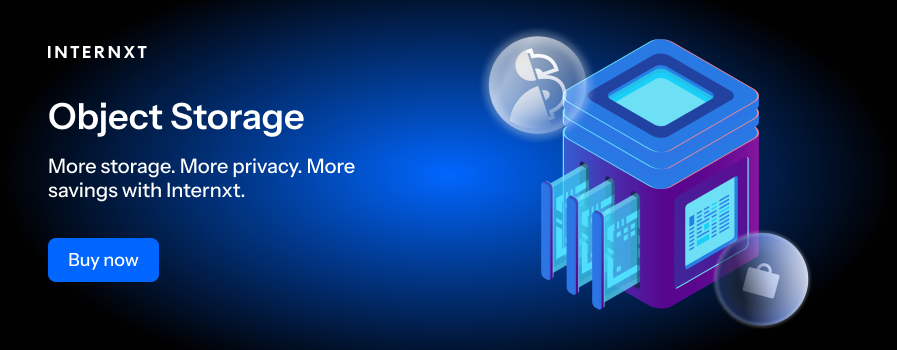
The next component which is crucial when dealing with the cloud is compliance. This automates important security tasks such as patching security vulnerabilities and configuring firewalls. As a result, companies can demonstrate compliance with legal frameworks to prove that the company takes measures to protect data.
Continuous monitoring is also something to keep in mind for cloud automation. Continuous monitoring ensures the performance and availability of cloud services to address any issues immediately without manual intervention. It can also assess system and resource performance to ensure effective cloud management.
Policy-driven automation is a set of predefined rules and policies to provide a cloud environment with the frameworks needed to adhere to specific standards, rules, and security measures based on predefined rules and policies.
One major advantage of cloud automation is its integration with other tools and systems to communicate and share data for a more powerful and streamlined experience.
Another worthy component of cloud automation that is crucial for business success, security, and longevity is data backup and recovery. With this, your company has additional insurance that files in the cloud are protected against data loss, corruption, or system failure.
Internxt, for example, enables redundancy across all files stored in the cloud so they are readily available should a disaster happen. This helps minimize downtime, comply with GDPR, and ensure the integrity of your business operations.
What are the benefits of cloud automation?
Transitioning to a cloud-automated environment is an exciting prospect for many businesses; here are some of the many benefits you can enjoy.
Increased efficiency and speed
Tasks that would usually take days or weeks to set up, such as server management or deploying applications, are greatly sped up thanks to cloud automation. This provisioning allows organizations to manage and deploy resources to set up a cloud architecture much faster and by automating different tasks.
Cost savings
When you implement cloud automation into your business, the impact it will have on cost savings will be huge. This is because you are not only saving time in managing resources, but you can also cut operational costs and scale storage automatically so you don’t pay for storage you don’t need.
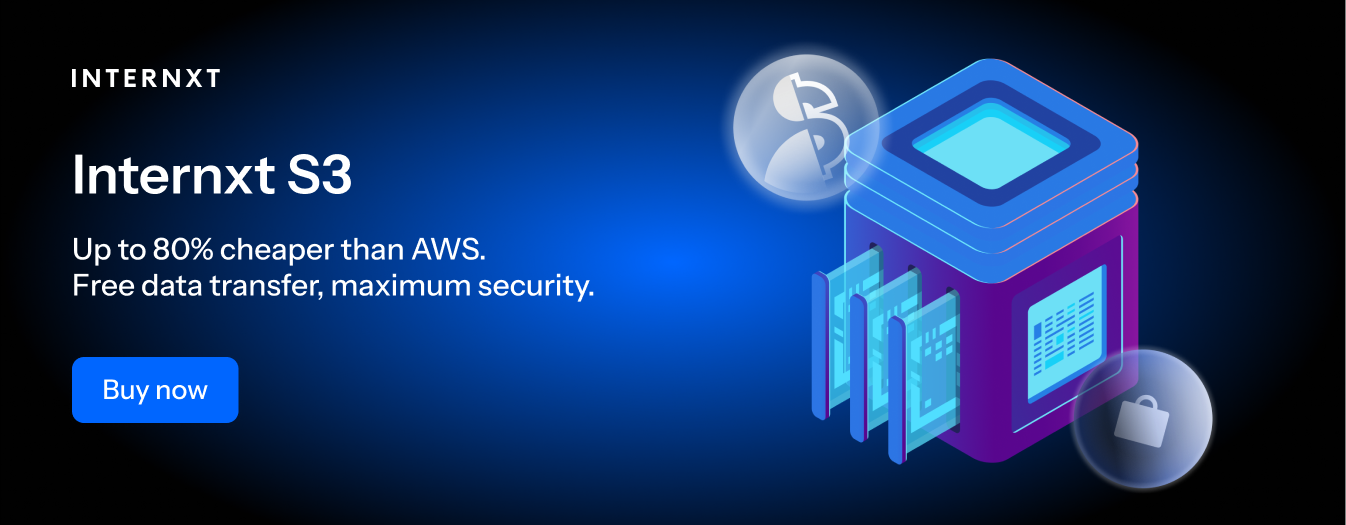
Scalability and flexibility
Scale your services up or down depending on your businesses cloud storage needs. By managing this automatically, cloud automation does the hard work for you, so teams no longer have to worry about meeting customers' needs during peak times.
Security
Cloud automation tools are designed to automatically monitor systems for vulnerabilities and threats and immediately address and fix them before they become an issue. This significantly reduces the risk of human error and notifies account managers of suspected unauthorized access.
Many compliance bodies, SOC 2, CCPA, SIEM, and more, demand that these security measures are implemented, so cloud automation helps businesses to meet these demands.
Increased productivity and efficiency
As cloud automation focuses on mundane and repetitive tasks, your team can focus on other areas to help your business succeed.
Compliance and auditing
Automated auditing ensures that logs are documented correctly for all actions and configurations, so when your company is audited and asked to show these logs, you can easily demonstrate and prove that all actions have been logged correctly.
Disaster recovery
As all your data is regularly backed up automatically, you don’t need to worry about accidental data deletion, loss, corruption, or potential cybersecurity threats, such as ransomware. Backups are a powerful and necessary addition to cloud storage, so automating this process is a game changer for businesses.
Data insights
Cloud automation tools can integrate with third-party analytics tools so you can regularly monitor and adapt your needs by gaining insights into system performance, security, and usage patterns.
By doing so, you can adapt your cloud as necessary to ensure optimum performance.
Challenges of implementing cloud automation
While the benefits of cloud automation are clear, managing and migrating to a new cloud infrastructure can cause problems or blockers during the process, so it's essential to plan for these and how to overcome them.
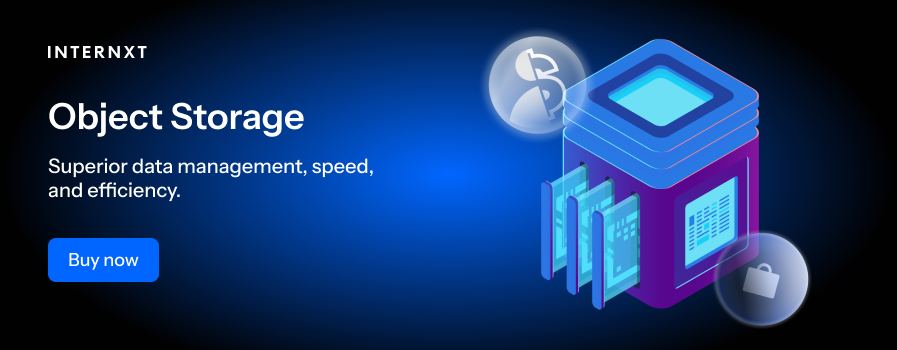
Some common issues you may face include:
- Complex to implement: Due to the mixture of different providers and infrastructures, setting this up with the proper framework will require specialized knowledge and expertise that not all businesses have available.
- Security or compliance risks: If not set up correctly, cloud automation can inadvertently create security risks if the defined rules are not correctly defined.
- Lack of team knowledge: Implementing cloud automation is a high-risk move without a skilled workforce. Businesses may not have the resources or budget to hire the experts required for this setup.
- Team resistance: On the other hand, your current team may feel threatened by automated tools and feel worried their job is at risk. By discussing and involving your team during this process and explaining that it is designed to reduce mundane tasks, you can make your employees feel more at ease.
How to choose the right cloud automation tools
Before choosing any cloud automation tool, working with your team and researching the best options that meet your needs is crucial. Here are some things that you should consider.
- Scalability: Make sure your platform meets your current needs and plan for future growth so you can continue working productively without any setbacks.
- Integration and compatibility: To avoid disruptions, ensure you can integrate with your existing cloud infrastructure.
- Security: choose providers with full end-to-end encryption, access controls, and other security measures.
- UX & UI friendly: To make the onboarding process easier for your team, check the platform has an intuitive interface and user-friendly features so the team can learn and train others for the best experience.
Before committing to any service, you can shop around and talk to different sales experts to gain more insights about the provider and a deeper understanding of the platform and how it can meet your needs. You can also use free trials or demos to test the service and see if it meets your requirements.
Automate your storage with Internxt S3
Internxt S3 object storage is a solution for large businesses and organizations to manage and access large volumes of data. Internxt S3 supports the same API as AWS but at a cost that is up to 80% cheaper at just €7/TB/month with zero data transfer fees.
Thanks to this predictable pay-as-you-go model, your team can effectively scale and predict future storage needs into the budget without worrying about hidden costs or additional service fees.
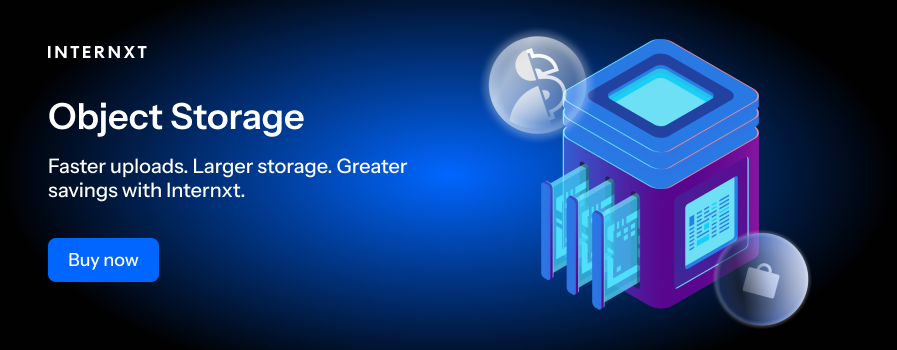
Like all of Internxt’s products, they are a GDPR-compliant cloud storage service that uses end-to-end encryption, access controls, and other security protocols to ensure data is protected and safe from data breaches.
To get started with Internxt S3, you can visit our website for more information or email us at hello@internxt.com, and we will help you get in touch with one of our experts to make your transition as easy as possible.

